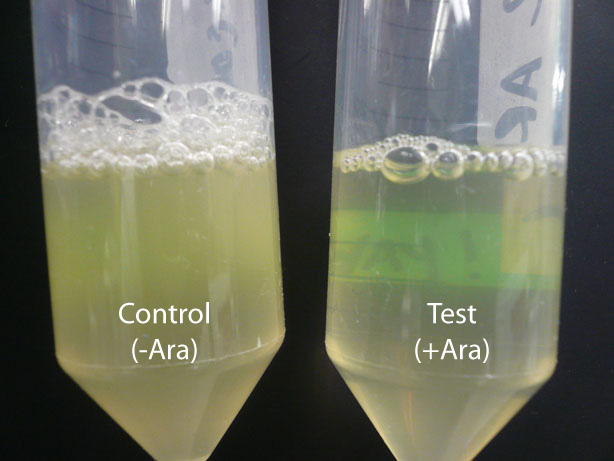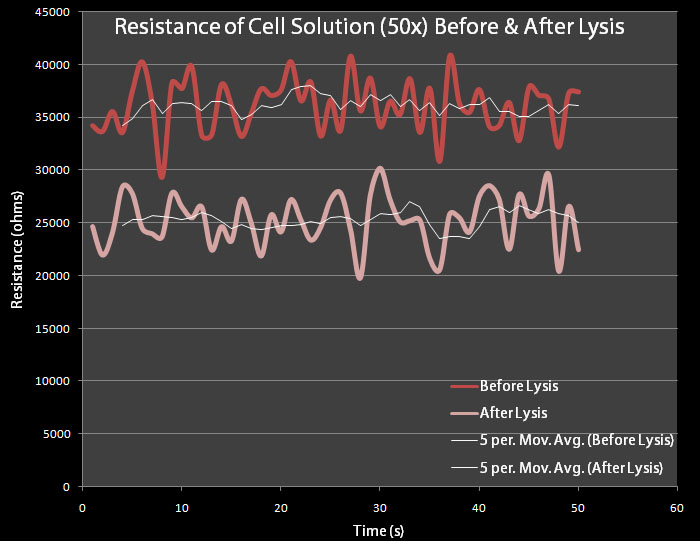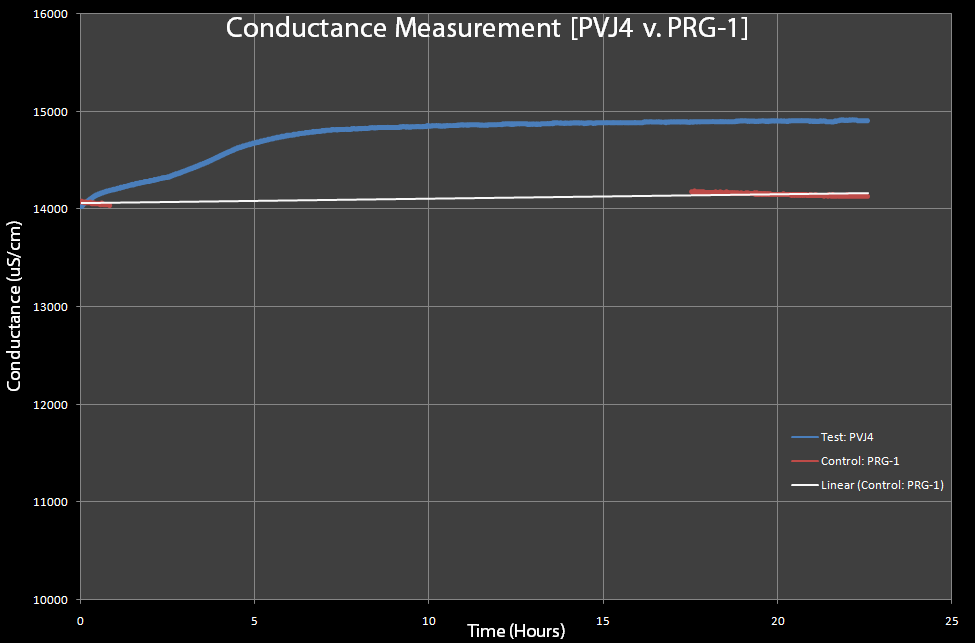Team:Brown/Project/Analysis
From 2008.igem.org
(→Conductivity Testing) |
|||
| Line 174: | Line 174: | ||
| - | * | + | *As cells lyse, the conductance of the solution should increase. In Figure 8, both the cells with the pVJ4 plasmid and cells with the pRG1 plasmid were exposed to 0.2% arabinose. The cells with the pRG1 plasmid (SRRz under PlacI) served as the control since they were proven to not lyse in the presence of arabinose. The graph suggests that conductance does increase as the cells lyse. Notice that the sharp increase in conductance of the cells with pVJ4 occurs after approximately 2 hours, which the optical density experiments showed was approximately the time lysis occurs after arabinose induction. |
Revision as of 03:55, 30 October 2008
Optical DensityIn order to test the mechanism of the SRRz lysis cassette, we took optical density measurements as cell lysis occurred. The construct we used for testing was contained on the pVJ4 plasmid. This plasmid was obtained from the Mekalanos lab at HMS and contained the SRRz gene cassette in a pBAD18 plasmid. Initially we introduced arabinose to the culture of cells, allowed the cultures to sit at room temperature for several hours and measured the optical density before and after the cells lysed. The results are displayed in Figure 1. It was observed that when cells lysis occurred, the solution of lysing cells cleared after a few hours, providing qualitative evidence that lysis occurred (Figure 2).
Next, we wanted to test the amount of time required for lysis to occur. We added 0.2% by volume of an arabinose stock solution to cell cultures and measured the optical densities of the cultures at discrete time points. The following graphs exhibit optical density trends during gene expression and resulting cell lysis and cell wall degradation. Figure 3A shows a test measuring optical density and correlates that data to a predicted change in resistance that should occur as the cells lyse. Figure 3B shows another test of change in optical density over time.
Optical density of the cell cultures significantly dropped between 1 and 2 hours after induction, signifying the expression of the lysis gene cassette. Notice that optical density increases slightly within the first hour of the test, due to continued cell growth before the lytic event. The predicted change in resistance reflects this period of cell growth.
NaCl Resistance Testing
Bacterial Resistance TestingIn order to test whether a change in resistance could be detected by a 50x concentration of cells, a test was conducted in which the resistance of the supernatant of a 50x concentrated cell solution was measured before and after lysis.
500 mL dilutions of both pRG1 and pVJ4 were made in LB Lennox and then centrifuged. The giant pellets were resuspended in 10mL of M9 Minimal Media. 0.2% arabinose was added to the pVJ4 culture with a 50% Arabinose Solution Our resistance apparatus recorded measurements overnight. Figure 6 shows the resistance readings before lysis and after lysis. As expected there is a decrease in resistance.
Conductivity Testing
|
 "
"







